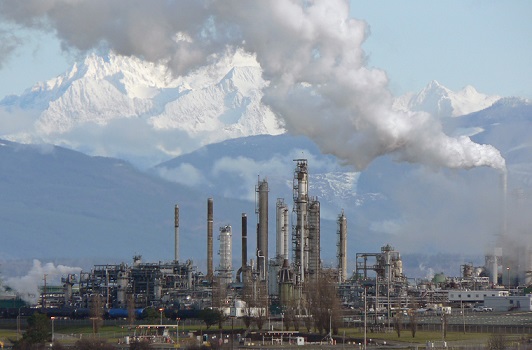Sanctions on Russia and high oil prices will have mixed credit implications: Report

NEW DELHI: Russian invasion of Ukraine will have a negative impact on investments of Oil and Natural Gas Corporation Limited, Oil India Limited, Indian Oil Corporation Limited and Bharat Petroleum Corporation Limited in the country; Moody’s Investors Service said in a recently released report titled “Oil & Gas - India: Sanctions on Russia and high oil prices will have mixed credit implications”.
The report further stated that the US ban on import of Russian oil and other international sanctions on Russia may constrain the future cash flow generating capacity of these assets. Such developments would lower the value of the Indian companies' investments and will likely result in impairment losses. However, unlike the European oil & gas companies, the Indian companies have not announced an exit from their Russian investments and therefore the immediate impairment in the value of investments will be limited, especially under the current oil price environment, it added.
For IOCL and BPCL, the Russian assets accounted for less than 5% of their total asset bases as of 31 December 2021. Both these entities receive earnings contribution from these assets in the form of dividends. In a situation where the companies cannot access these cash flow, we do not expect any material impact on their financial profiles. This is because the dividend income from the Russian investments accounted for just around 2%-4% of their consolidated EBITDA for the fiscal year ended March 2021 (FY2021); the report further added.
Meanwhile, the Russian assets make a significant portion of integrated oil companies' production and reserves volume despite being a small proportion of their total asset base. For ONGC, its Russian assets accounted for around 12% and 20% of its production volumes and proved reserves respectively for FY2021. For OIL, these proportions stood at around 31% and 24% respectively over the same period.
Nevertheless, the assets' contributions to the two companies' profit and cash flow are more moderate. For ONGC, the Russian assets contributed to around 11% of its consolidated EBITDA for the FY2021. Around 8% of this contribution came from the Sakhalin-1 project while the balance was in the form of dividends by CJSC Vankorneft.
Even if ONGC's loses its entire earnings contribution from the Russian assets, the impact can be accommodated into ONGC's credit profile. Without earnings contribution from the Russian assets, we expect retained cash flow (RCF)/net debt to be around 55%-60%. This compares to its downgrade trigger of RCF/net debt falling below 15%-20%.
For OIL, earnings contribution from its Russian assets is mostly in the form of dividends which will constitute around 5%-6% of its consolidated EBITDA over the next 12-18 months. We expect OIL's retained cash flow (RCF)/net debt to remain strongly positioned at around 55%-60% over the next 12-18 months even without the dividend income. This compares with its downgrade trigger of RCF/net debt falling below 15%-20%.
The report stated that the ongoing geopolitical tensions will incentivize decarbonization and intensify carbon transition risks. If crude oil supplies from Russia were to be suspended, it will result in supply shortages. For countries such as India (Baa3 stable) which imports around 85% of its crude oil requirements, this situation will necessitate further investments to develop alternate energy sources to meet its energy requirements, intensifying carbon transition risks.











